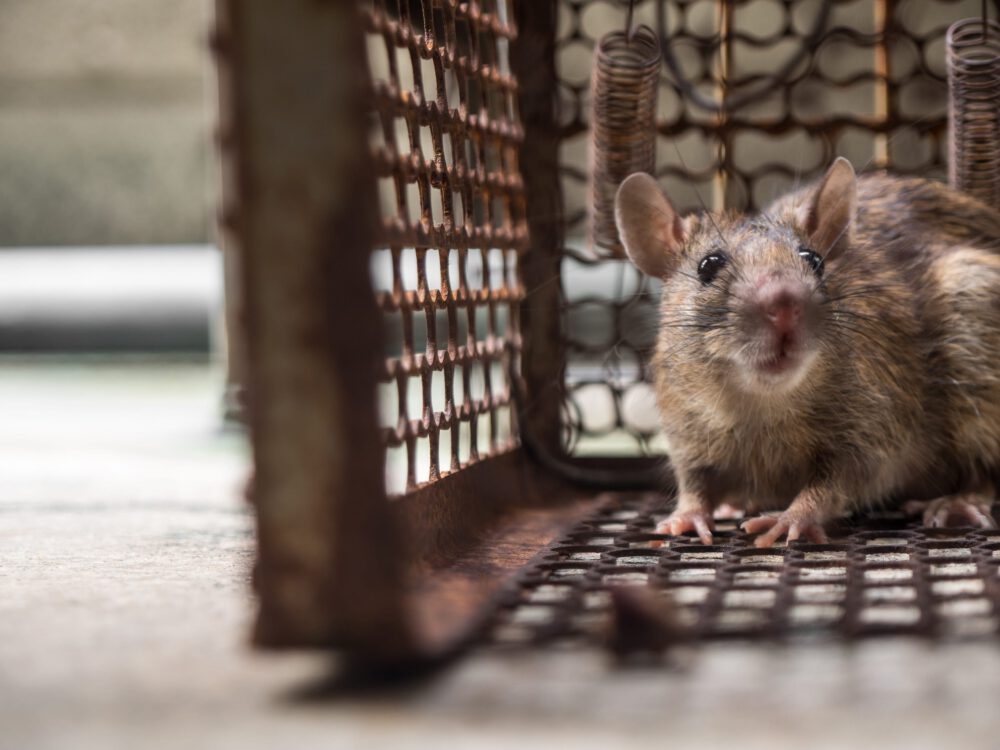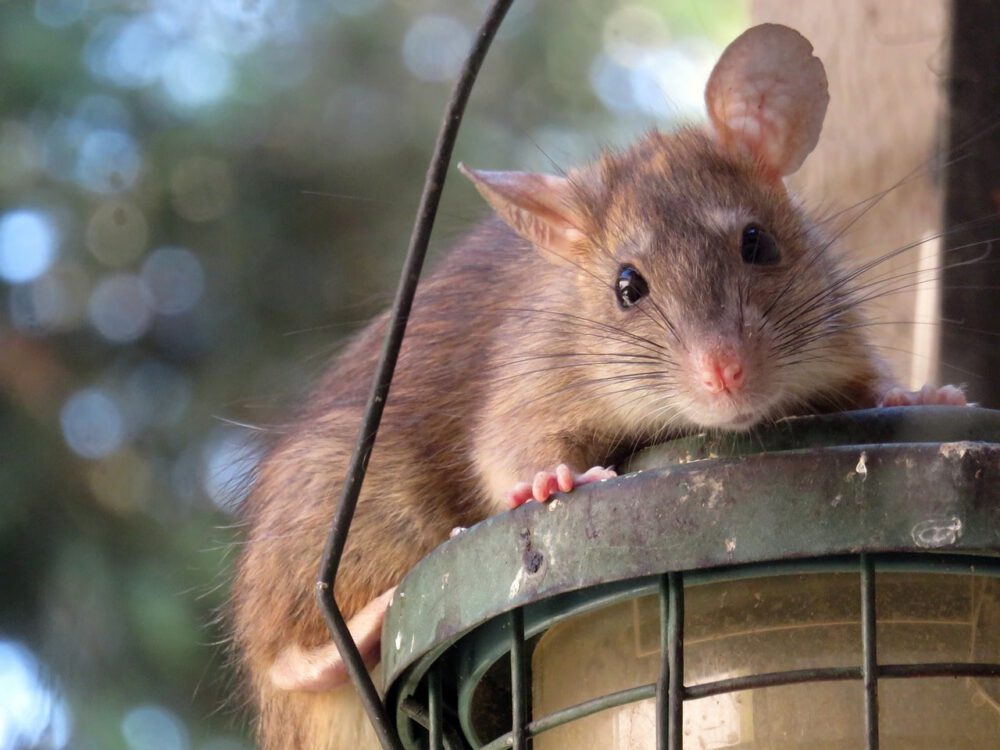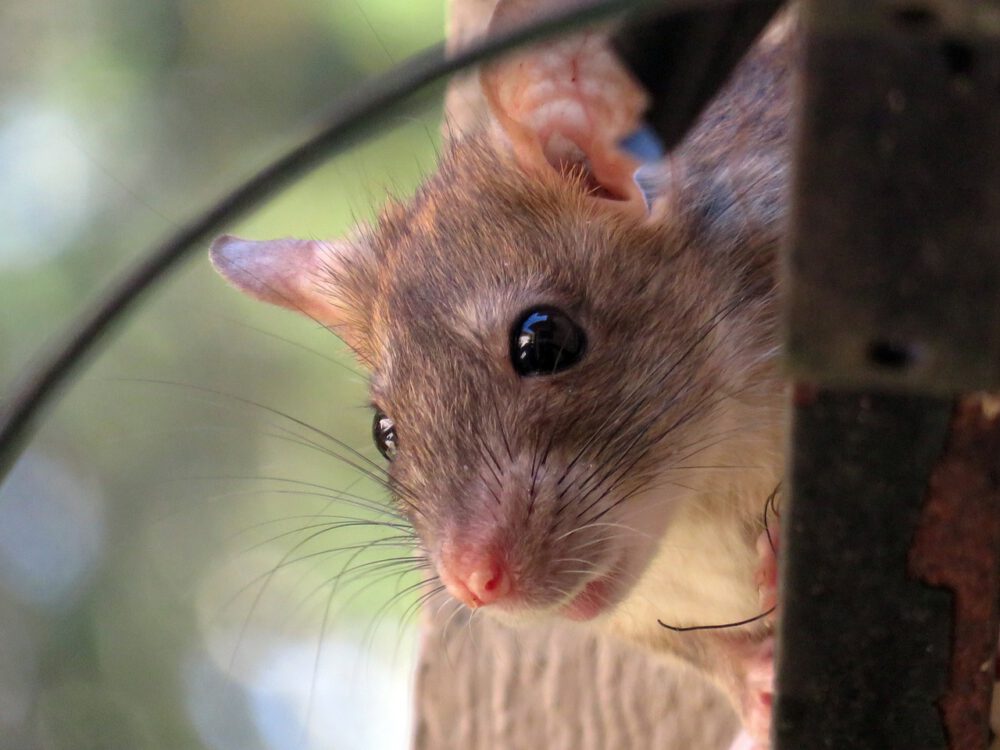Often referred to as black rats or ship rats, Roof Rats are the smaller and sleeker of the two common rat varieties. The Norway rat is larger. It is called a roof rat for apparent reasons, as it likes to make its home in high places. Found worldwide, roof rats are believed to be from Southeast Asia. They are very common in coastal states and tropical regions.
Roof Rat Facts
The Roof Rat Appearance:
The roof rat is a brown and black-bodied rat with a long thin scaly tail. They also have large ears and eyes and a pointed nose. Their fecal matter is helpful in identification and measures about ½ inch with one pointy end.
- Length: head and body can grow 6 to 8 inches.
- Tail length: Same as the body or a bit longer, 6 to 10 inches.
- Weight: between 5 and 12 ounces.
Roof Rat Behavior:
Roof rats are nocturnal critters who like to live where there are water and food sources. The acrobatic roof rat can be seen scaling high wires and tree branches to get to high roofs and treetops to get where it wants. As with most rats, these rats are adaptable, but they prefer to live in areas like attics, buildings, garages, rafters, roofs, trees, and even walls.
Diet:
The roof rat eats an omnivorous diet and will eat almost anything they find. Also, they are food hoarders and will stash their food supply in their homes. Unlike most meat-eating rats, they most prefer to eat fruits, nuts, acorns, seeds, grains, tree bark, and some meats, much like the diet of a squirrel.
Reproduction:
The roof rat reaches maturity around 2 to 5 months with four to six litters per year. Each litter has six to eight young. So, as you can see, one rat can turn into a rat infestation in no time. Female rats are known to have up to 40 rat babies per year. That can be a real problem if they are in your home attic.

Are Roof Rats Dangerous?
The answer here is a resounding yes, and in more ways than one. Since they move around at night they often go undetected until too late. Below are only some of the issues they will create if they go unnoticed in your home.
Damage to the Home
Not only are roof rats plain dirty, but they can cause damage to your home as well.
- Structural damage to your home includes using the house as a bathroom and a nest, and more. If they chew at the beams in the attic or flooring, you have a more significant issue.
- Chewing electrical wires causes shortages in power and may strike up electrical fires.
- They can chew through steel, concrete, aluminum, wood, and plastics with their razor-sharp teeth.
Food Contamination
When rats get into your food supply, they contaminate your foods with their shed fur, feces, and urine. Eating contaminated food with rat feces or urine can lead to a bacterial infection such as salmonella poisoning.
Roof Rats Carry Dangerous Diseases
It’s no secret that rats carry dangerous diseases that can affect humans through their urine and feces. Other than salmonella, the most well-known diseases transmitted by rats include leptospirosis, rat-bite fever, and Weil’s disease.
Additionally, roof rats may serve as a reservoir for Toxoplasma Gondii, the parasite that causes toxoplasmosis. However, the disease usually spreads from rats to humans when domestic cats feed on infected brown rats.

Rats Carry Fleas and Ticks
Fleas and ticks are attracted to household pets like dogs and cats. This is one reason why your pet can also get fleas or ticks when a rat infestation occurs. You sure don’t want that.
To avoid damage to your home and to keep your family from getting sick, let the experts at Covenant Wildlife Removal come in and move them out.
Preventing a Roof Rat Infestation
As with all rodents, roof rats require food, water, and a relaxing nesting site. Keeping wood stacks away from the home, raking up fallen plants and fruit, and not leaving pet food or water outside, particularly overnight, are all excellent ways to avoid rats. Keep trash bin securely secured with a tight lid, store bulk food in sealed plastic containers, and check for sources of standing water since roofing system rats need an ounce of water a day.
Then you can also keep branches from touching your home, seal up any open vents or holes in the facia, and ensure weatherstripping is secure. When in doubt, call Covenant Wildlife out to inspect the home and recommend entry point elimination.

Covenant Wildlife Removal Removes the Roof Rat
This is where Covenant Wildlife Removal comes in to save the day. The most common way to remove roof rats is to trap them. Poison is not a good idea because the vermin can die in the home and create a whole different issue. Besides, the poison is dangerous around children and pets.
However, you need not worry about that. At Covenant Wildlife Removal, we will remove the rats, find the entry points and seal them up, and finally, clean up after them. We are fully equipped and experienced at getting to the source of the problem and eradicating the wildlife.
Rat Removal Service includes:
- Trapping and Removal
- Clean Up
- Disinfection
- Odor Removal
- Repair of the area
You will want to practice your patience with trapping the rats. Since they are out at sunset and dusk, the rats will need to trapping at those times. It can take a few days to get them all, especially if they get wise to your efforts.
Covenant Wildlife Removal is a top-rated local family-owned, full-service wildlife trapping, removal, and repair service. We can remove a rat infestation before it becomes an extensive problem for you and your family.
Contact us or call 205-850-5760 to set up an inspection.

